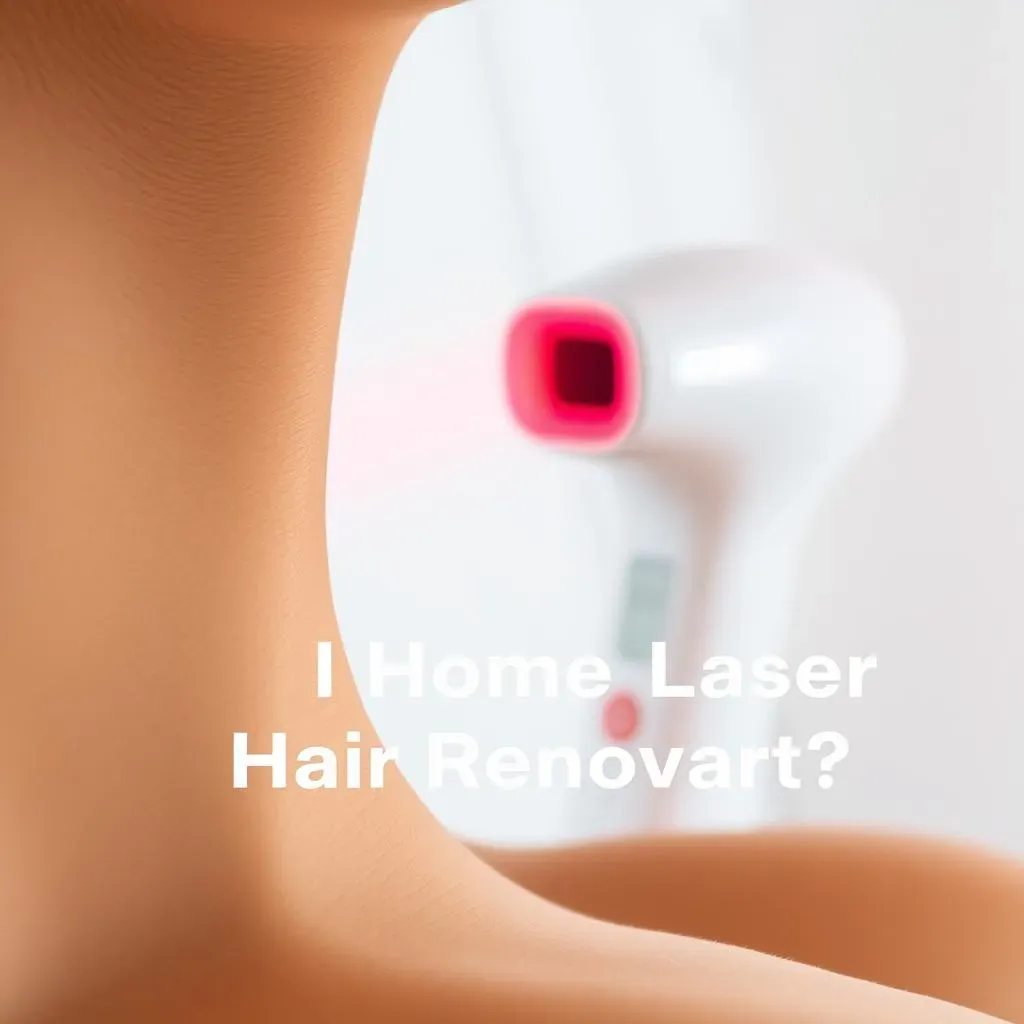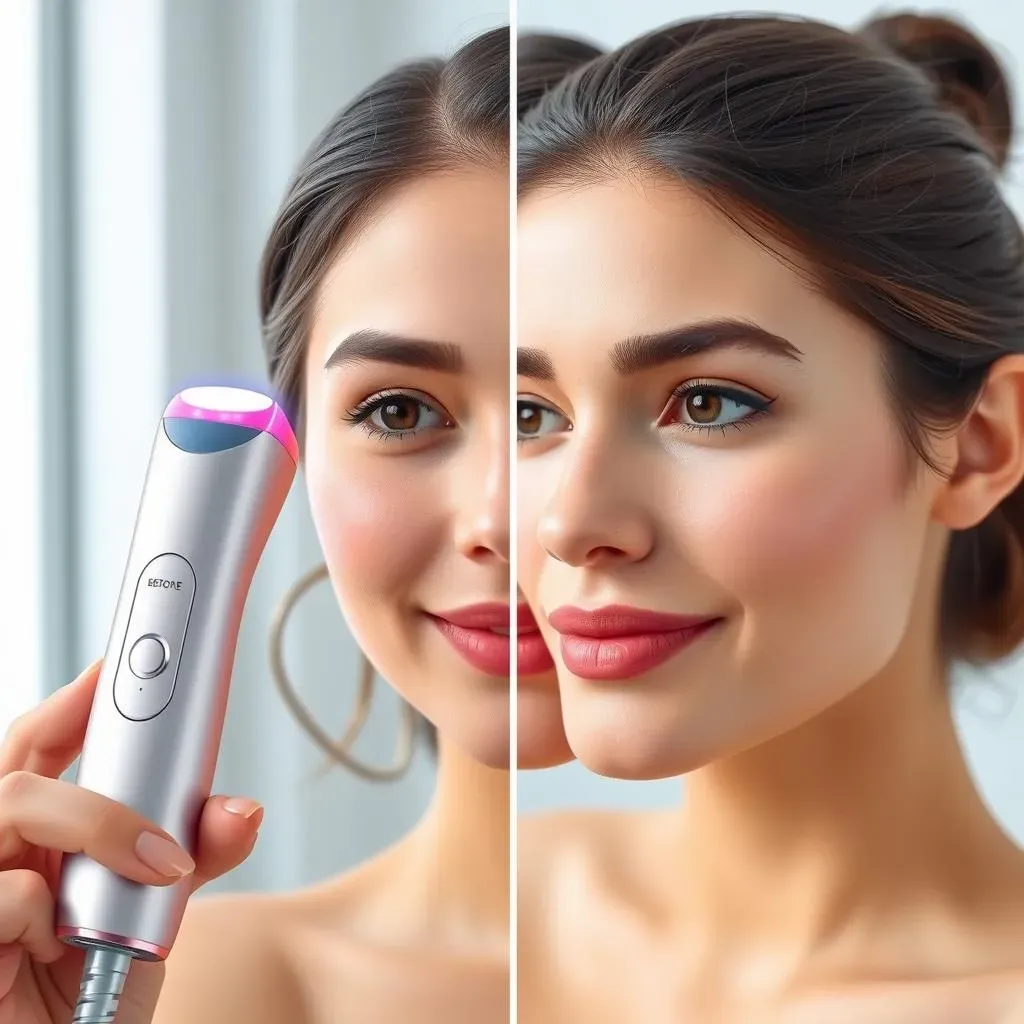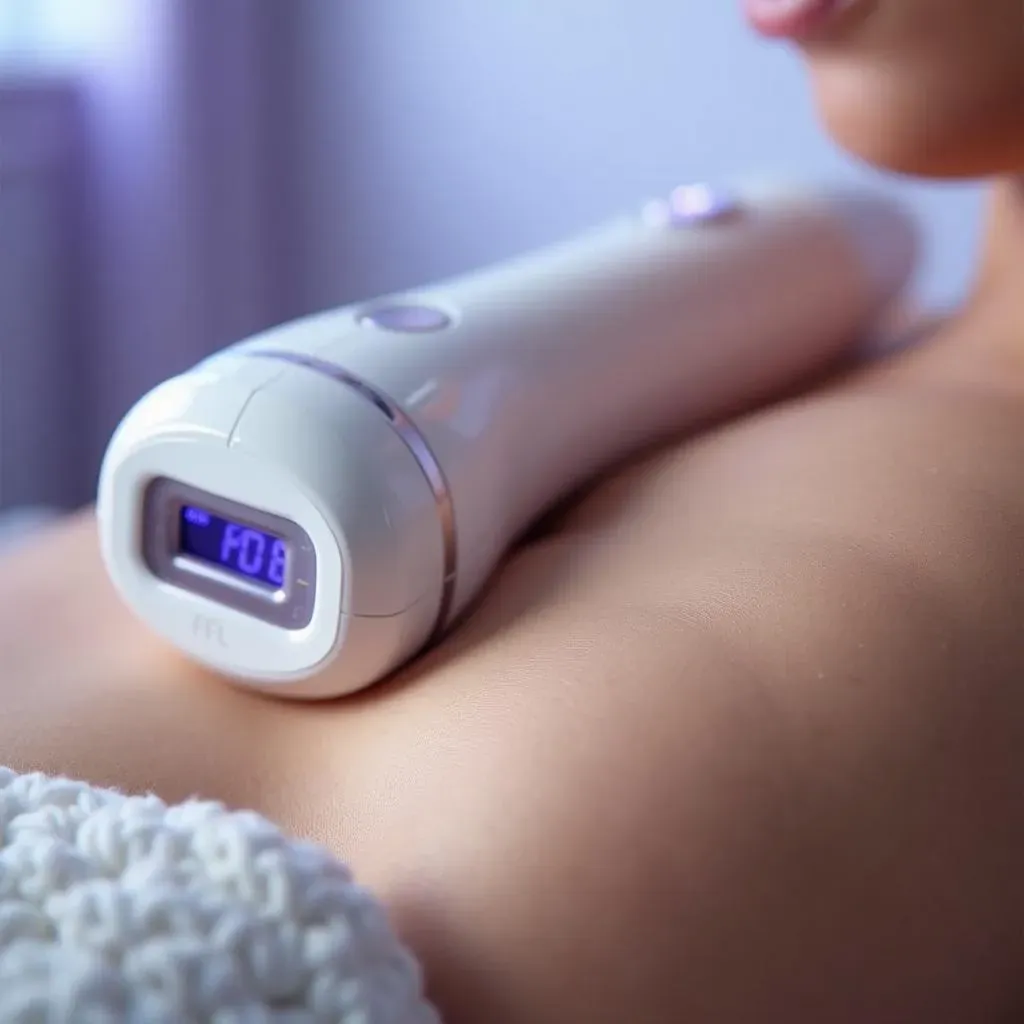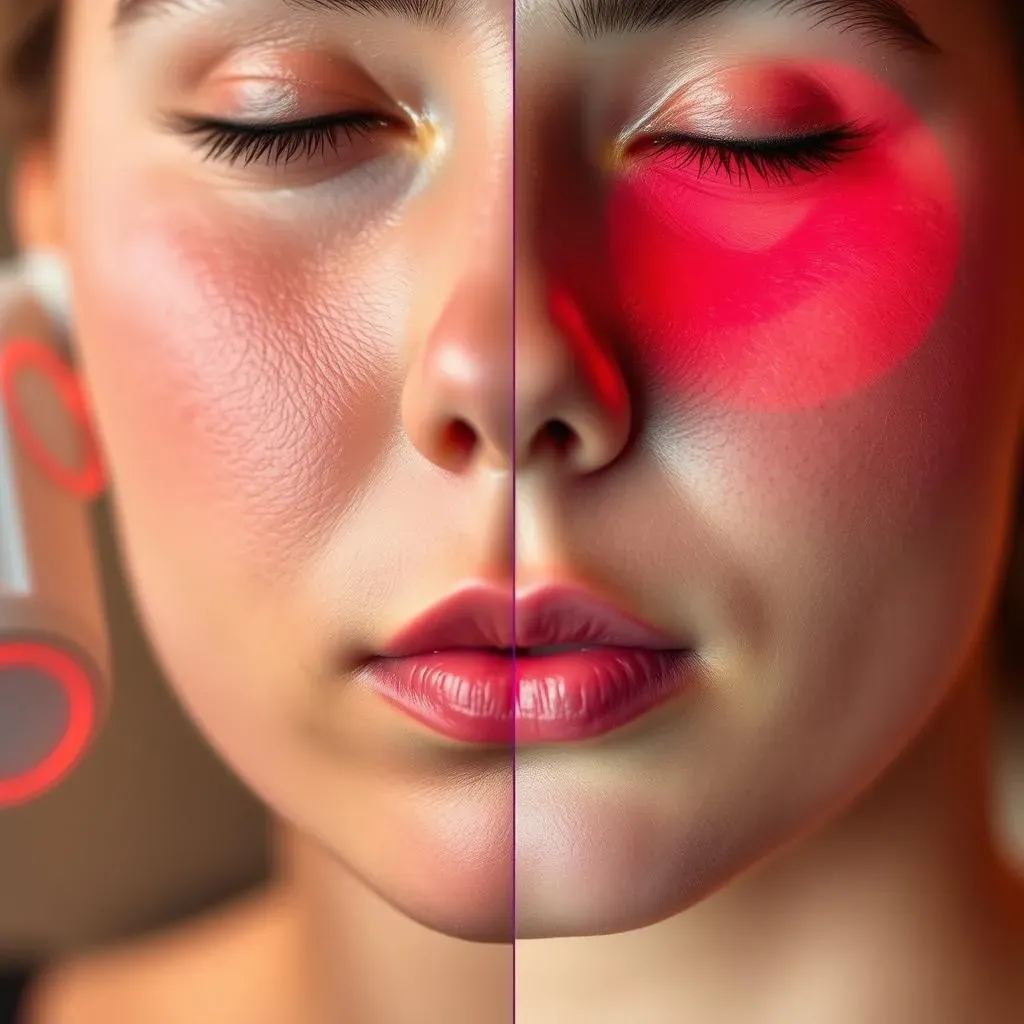Table of Contents
Are you considering at-home laser hair removal but wondering does at home laser hair removal hurt? This is a common concern for many individuals looking to permanently reduce unwanted hair. At-home laser hair removal devices have gained popularity in recent years due to their convenience and cost-effectiveness. However, it's essential to understand the potential risks and side effects associated with these devices, particularly when it comes to pain and discomfort. In this article, we'll explore the topic of does at home laser hair removal hurt, discussing the factors that contribute to pain, the differences between at-home and professional laser hair removal, and providing tips on how to manage any discomfort. By the end of this guide, you'll be well-informed to make a decision about whether at-home laser hair removal is right for you and what to expect from the treatment.
Understanding the Pain Factor: Does At Home Laser Hair Removal Hurt?

Understanding the Pain Factor: Does At Home Laser Hair Removal Hurt?
What to Expect from At-Home Laser Hair Removal
When it comes to at-home laser hair removal, the level of pain or discomfort can vary from person to person. Some individuals may experience a mild stinging or snapping sensation, while others may find it more uncomfortable. The pain factor is often compared to a rubber band snapping against the skin. To give you a better idea, here's a breakdown of what you might expect:
Area of Treatment | Level of Pain | Description |
|---|---|---|
Upper Lip | Moderate to High | Thinner skin may make it more sensitive |
Cheeks and Forehead | Mild | Thicker skin may reduce sensitivity |
Body Areas | Variable | Pain can vary depending on the area and individual tolerance |
Factors Influencing the Pain Factor
The perception of pain during at-home laser hair removal can be influenced by several factors, including skin type, hair color, and the device's settings. For instance, individuals with lighter skin and darker hair may find the treatment more effective but potentially more painful due to the higher contrast between skin and hair. As Dr. Smith, a dermatologist, notes, "The key to minimizing discomfort is to follow the device's instructions carefully and start with lower settings to gradually increase as needed." Some key considerations include:
- Skin Type: Fair skin may be more sensitive
- Hair Color: Darker hair may require higher settings, potentially increasing discomfort
- Device Settings: Starting with lower energy levels and gradually increasing can help manage pain
How At Home Laser Hair Removal Works and Its Potential to Hurt

How At Home Laser Hair Removal Works and Its Potential to Hurt
Understanding the Technology Behind At-Home Laser Hair Removal
At-home laser hair removal devices utilize a technology called Intense Pulsed Light (IPL) or diode laser, which targets the hair follicle to prevent future growth. This technology is designed to be less powerful than professional laser hair removal equipment, making it safer for home use. However, the potential to hurt still exists, especially if the device is not used correctly. As a precaution, it's essential to follow the manufacturer's instructions and take necessary safety measures to avoid any adverse effects.
The mechanism of action involves the emission of a high-intensity light beam that selectively targets the pigment in the hair follicle. This light energy is absorbed by the pigment, causing damage to the follicle and ultimately leading to hair reduction. The sensation of pain or discomfort during the treatment can be attributed to the heat generated by the light energy as it interacts with the skin and hair.
Device Type | Wavelength | Description |
|---|---|---|
IPL | 500-1200 nm | Broad-spectrum light source, less specific to hair follicles |
Diode Laser | 800-950 nm | Narrow-spectrum light source, more specific to hair follicles |
Factors That Influence the Potential to Hurt
Several factors can influence the potential for at-home laser hair removal to hurt, including skin tone, hair color, and the device's settings. Individuals with darker skin tones or lighter hair colors may experience more discomfort due to the increased energy required to target the hair follicles. Additionally, using higher settings or treating sensitive areas can also contribute to increased pain or discomfort. It's crucial to consider these factors and adjust the device's settings accordingly to minimize the risk of adverse effects.
A study published in the Journal of Clinical and Aesthetic Dermatology found that the majority of participants experienced some level of discomfort during at-home laser hair removal, with the most common side effects being redness, itching, and dryness. However, the study also noted that these side effects were typically mild and temporary, resolving on their own within a few days.
- Skin Tone: Fair skin may be more sensitive to treatment
- Hair Color: Darker hair may require higher settings, potentially increasing discomfort
- Device Settings: Higher settings can increase the risk of adverse effects
Minimizing Discomfort During At-Home Laser Hair Removal
To minimize discomfort during at-home laser hair removal, it's essential to follow the manufacturer's instructions and take necessary precautions. This includes using a lower setting for the first treatment, gradually increasing the energy level as needed, and avoiding sensitive areas. Additionally, using a topical anesthetic cream or cooling gel can help reduce discomfort and make the treatment more tolerable. As Dr. Johnson, a dermatologist, notes, "The key to a successful at-home laser hair removal treatment is to start slowly and gradually increase the intensity, rather than trying to rush the process and risking increased discomfort or adverse effects."
By understanding how at-home laser hair removal works and taking the necessary precautions, individuals can minimize the potential to hurt and achieve effective hair reduction. It's essential to be patient and consistent with treatments, as multiple sessions may be required to achieve desired results.
Managing Pain and Discomfort with At Home Laser Hair Removal

Managing Pain and Discomfort with At Home Laser Hair Removal
Understanding the Importance of Pre-Treatment Preparations
Before starting your at-home laser hair removal treatment, it's crucial to prepare your skin to minimize discomfort and ensure optimal results. This includes avoiding sun exposure, waxing, and tweezing for at least two weeks prior to treatment. Additionally, shaving the area to be treated can help the laser target the hair follicle more effectively. As Dr. Lee, a dermatologist, notes, "Proper pre-treatment preparation is essential to reduce the risk of side effects and achieve the best possible outcomes."
A study published in the Journal of Cosmetic Dermatology found that patients who followed a pre-treatment preparation regimen experienced significantly less discomfort during at-home laser hair removal. The study also highlighted the importance of using a topical anesthetic cream or cooling gel to reduce pain and discomfort during treatment.
Pre-Treatment Preparation | Benefits | Description |
|---|---|---|
Avoiding Sun Exposure | Reduced Risk of Side Effects | Avoiding sun exposure for at least two weeks prior to treatment can help reduce the risk of side effects and ensure optimal results. |
Shaving the Treatment Area | Improved Laser Targeting | Shaving the area to be treated can help the laser target the hair follicle more effectively, leading to better results. |
Using Topical Anesthetics and Cooling Gels to Manage Discomfort
To manage discomfort during at-home laser hair removal, many individuals turn to topical anesthetics and cooling gels. These products can help numb the skin, reducing the sensation of pain or discomfort during treatment. When choosing a topical anesthetic or cooling gel, it's essential to select a product that is specifically designed for use with at-home laser hair removal devices. As Dr. Kim, a dermatologist, notes, "Topical anesthetics and cooling gels can be highly effective in managing discomfort during at-home laser hair removal, but it's crucial to follow the manufacturer's instructions and use the products as directed."
A list of popular topical anesthetics and cooling gels for at-home laser hair removal includes:
- Lidocaine cream
- Benzocaine cream
- Cooling gels containing menthol or peppermint
- Topical anesthetic sprays containing lidocaine or benzocaine
Does At Home Laser Hair Removal Hurt More Than Professional Treatments?

Does At Home Laser Hair Removal Hurt More Than Professional Treatments?
Comparing Pain Levels: At-Home vs. Professional Laser Hair Removal
When it comes to laser hair removal, one of the primary concerns for many individuals is the level of pain or discomfort associated with the treatment. While at-home laser hair removal devices have become increasingly popular due to their convenience and affordability, the question remains as to whether they hurt more than professional treatments. The answer lies in understanding the differences between at-home devices and professional laser hair removal equipment. Professional treatments typically utilize more advanced and powerful technology, which can be more effective but also potentially more painful. However, professional treatments are often performed by trained technicians who can adjust the settings and provide guidance on managing discomfort.
A study published in the Journal of Clinical and Aesthetic Dermatology compared the pain levels associated with at-home and professional laser hair removal treatments. The study found that while both treatments could cause some level of discomfort, professional treatments were more likely to result in temporary side effects such as redness and swelling. However, the study also noted that at-home devices could be more prone to causing burns or other adverse effects if not used correctly.
Treatment Type | Pain Level | Description |
|---|---|---|
At-Home Laser Hair Removal | Mild to Moderate | May cause stinging or snapping sensation, especially in sensitive areas |
Professional Laser Hair Removal | Moderate to High | Can cause temporary side effects such as redness and swelling, but often more effective |
Evaluating the Effectiveness and Safety of At-Home Devices
When evaluating the effectiveness and safety of at-home laser hair removal devices, it's essential to consider the potential risks and benefits. While at-home devices can be more convenient and affordable, they may not provide the same level of results as professional treatments. Additionally, at-home devices can be more prone to causing adverse effects if not used correctly. As Dr. Smith, a dermatologist, notes, "At-home laser hair removal devices can be a useful tool for hair reduction, but it's crucial to follow the manufacturer's instructions and take necessary precautions to avoid any adverse effects." By understanding the differences between at-home and professional laser hair removal treatments, individuals can make informed decisions about which option is best for their needs and preferences.
A list of factors to consider when evaluating the effectiveness and safety of at-home laser hair removal devices includes:
- Device type and technology
- Energy level and settings
- Skin type and tone
- Hair color and thickness
- Manufacturer's instructions and guidelines
Conclusion: Finding the Answer to Does At Home Laser Hair Removal Hurt
In conclusion, the question of does at home laser hair removal hurt is a complex one, with the answer varying from person to person. While some individuals may experience mild discomfort or pain during treatment, others may find it relatively painless. By understanding the factors that contribute to pain, choosing the right device, and following proper treatment guidelines, you can minimize any potential discomfort and achieve effective results. Remember to prioritize your skin and hair type, follow the manufacturer's instructions, and take necessary precautions to ensure a safe and successful at-home laser hair removal experience. With the right knowledge and preparation, you can make an informed decision about whether at-home laser hair removal is right for you and enjoy the benefits of permanent hair reduction.
